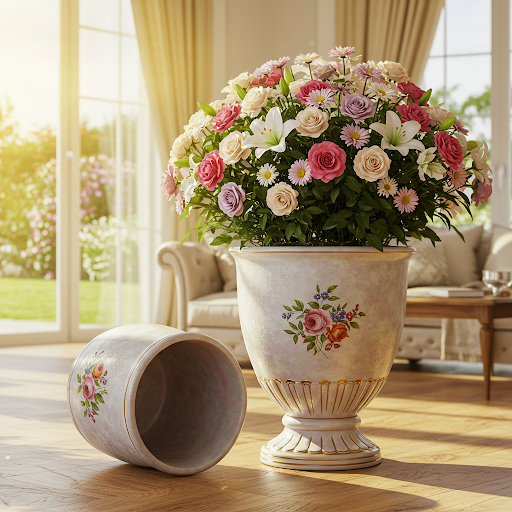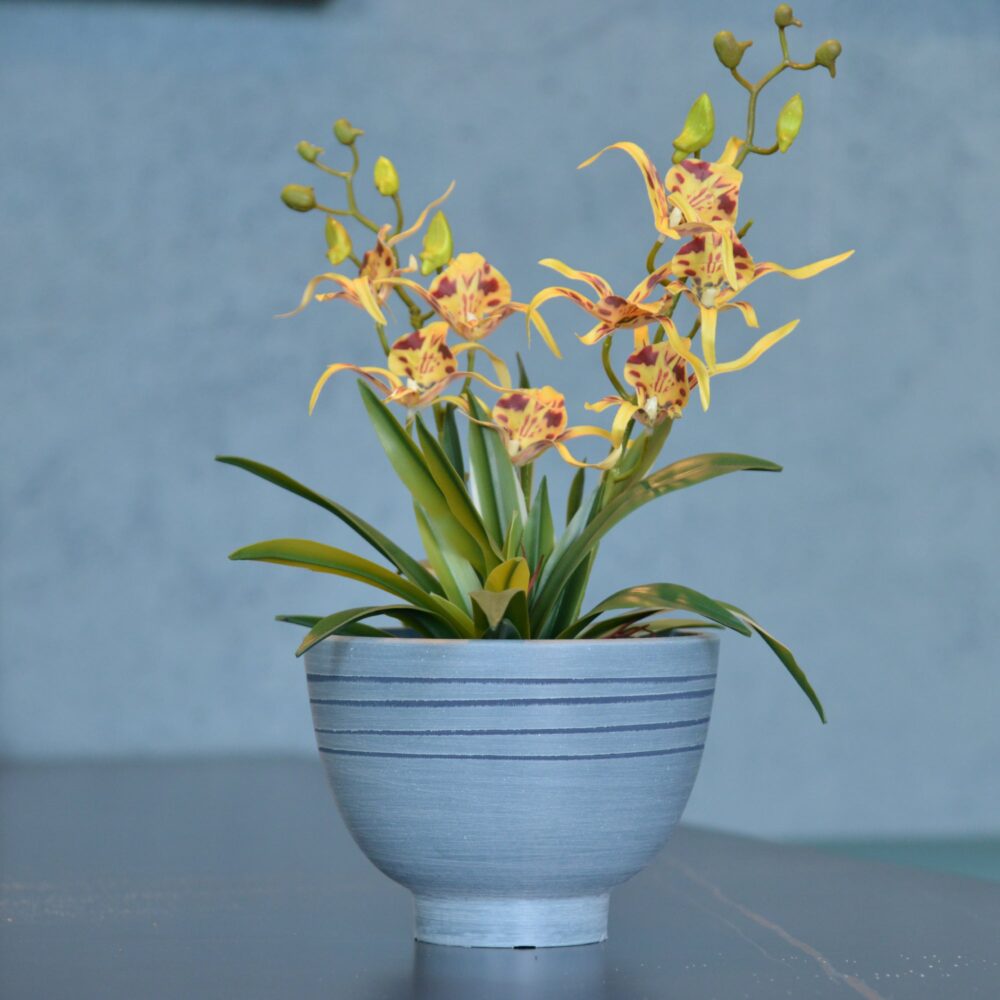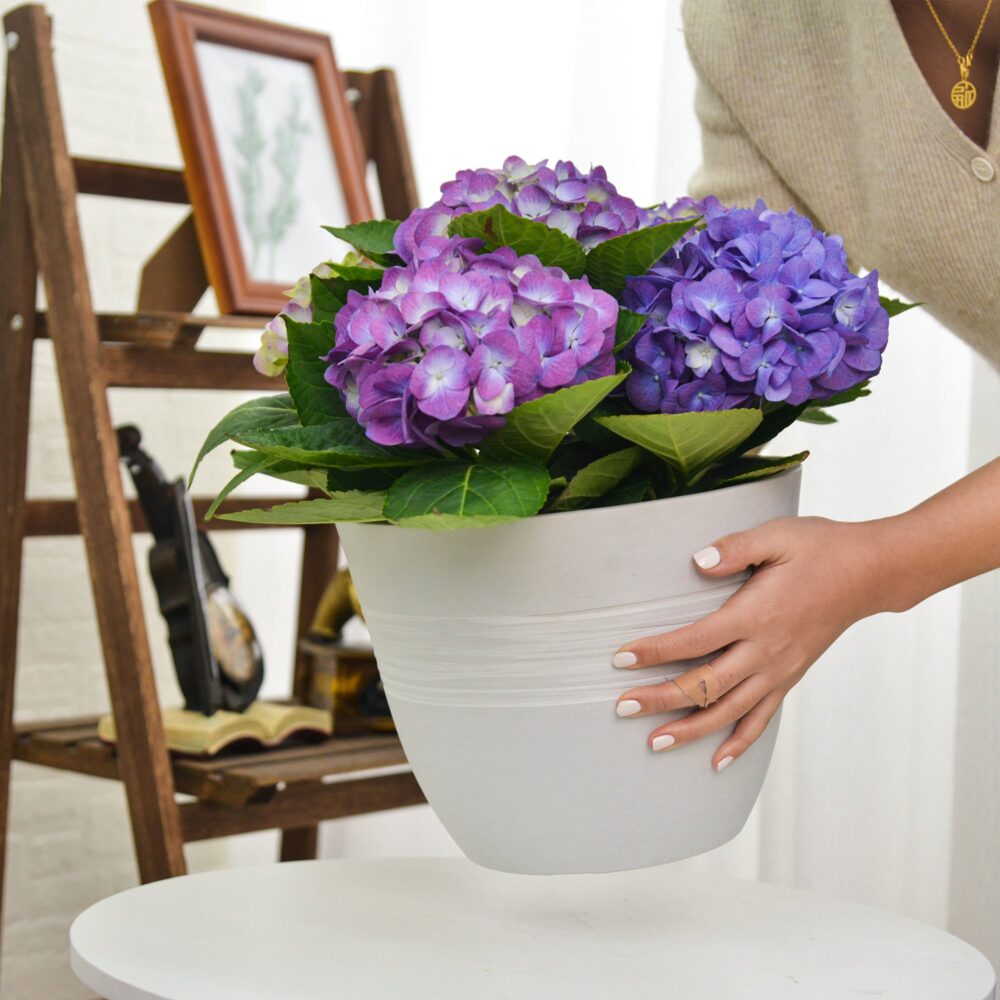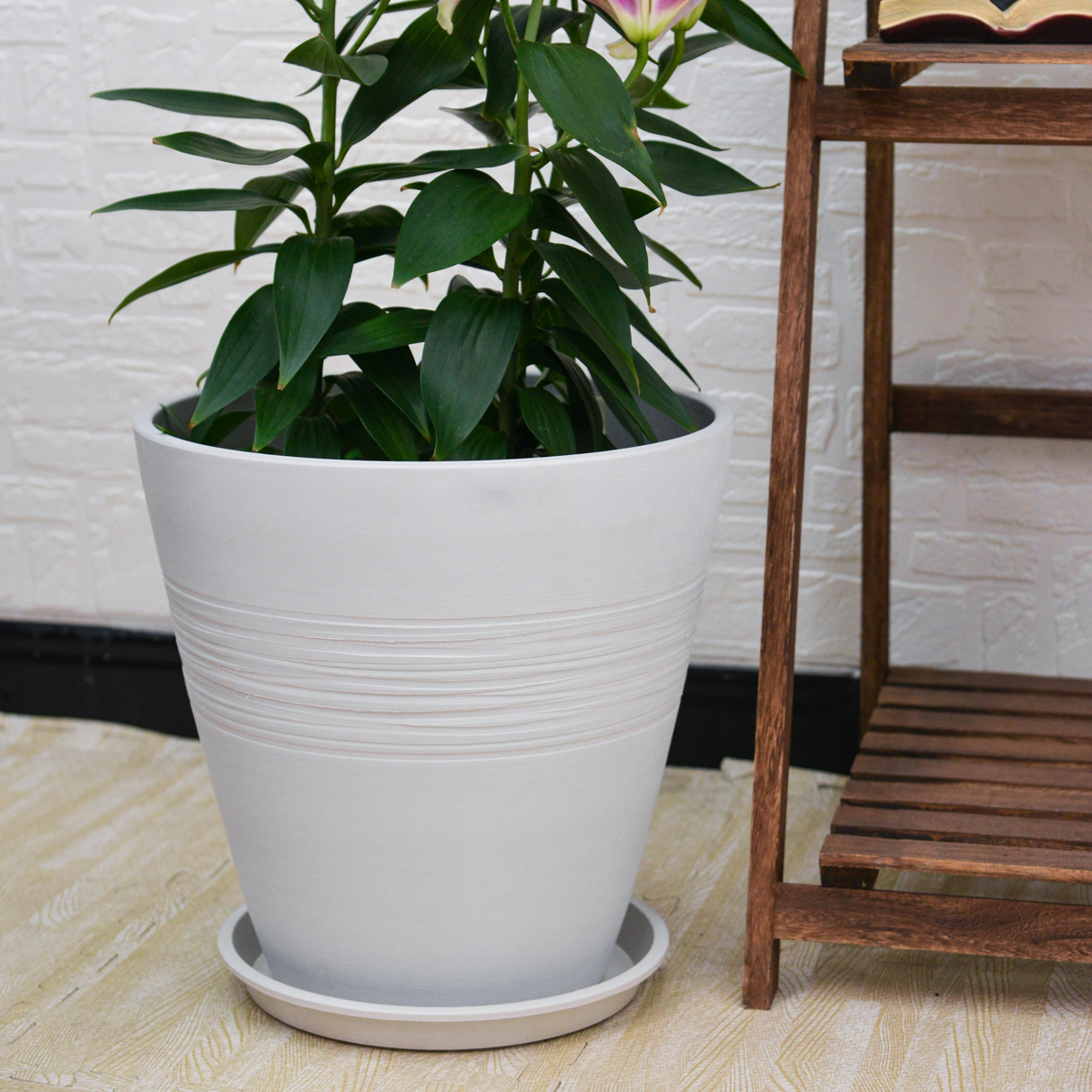What Are the Negative Consequences of Using a Planter That Is Too Small or Too Large for a Plant? How Can I Tell If a Planter Size Is Appropriate?
Choosing the right planter size for your plants might seem like a minor detail, but it’s actually a critical factor that can significantly impact their health and growth. Using a planter that is either too small or too large can lead to a range of negative consequences, hindering your plant’s ability to thrive and potentially leading to its decline. Understanding these potential problems and knowing how to assess planter size is essential for successful container gardening.
This article will explore the negative consequences of using planters that are either too small or too large for your plants. We will clearly outline the problems associated with both underpotting and overpotting, and equip you with practical knowledge to determine if your planter size is appropriate and how to avoid common sizing mistakes. Get ready to ensure your plants are happily potted in containers that perfectly support their health and growth!
Negative Consequences of Using a Planter That Is Too Small (Underpotting)
Using a planter that is too small for your plant, also known as underpotting, restricts root growth and leads to a variety of problems:
Root-Bound Conditions:
- Restricted Root Growth: The roots of the plant run out of space to expand within the confines of the small pot. They become cramped, circling around the inside of the container, and densely packed.
- Impaired Nutrient & Water Uptake: Root-bound roots are less efficient at absorbing water and nutrients from the soil. This is because the root system is compressed and less able to explore the soil volume.
- Stunted Growth: Limited root growth directly translates to limited top growth. Underpotted plants will often exhibit stunted growth, remaining smaller than they should be and failing to reach their full potential.
Nutrient Deficiencies:
- Rapid Nutrient Depletion: The small volume of soil in an undersized pot contains a limited supply of nutrients. These nutrients are quickly depleted as the plant grows and absorbs them.
- Frequent Fertilizing Needed: Underpotted plants require much more frequent fertilization to compensate for the rapid nutrient depletion in the small soil volume. This can be challenging to maintain consistently and can sometimes lead to fertilizer burn if not done carefully.
Water Stress & Drying Out Too Quickly:
- Limited Water Reservoir: Small pots hold a very limited amount of water. The soil in undersized planters dries out extremely quickly, especially in warm weather or for water-demanding plants.
- Frequent Watering: Underpotted plants require very frequent watering, sometimes even multiple times a day, to prevent them from drying out. This can be time-consuming and easily lead to missed waterings and plant stress.
- Wilting & Drooping: Plants in too-small pots are prone to wilting and drooping, especially during warmer parts of the day, as they struggle to get enough water.
Instability & Tipping:
- Top-Heavy Plants: As the plant grows taller and heavier above the soil, a small, lightweight pot can become unstable and prone to tipping over, especially in windy conditions outdoors or if bumped indoors.
- Damage to Plant & Surroundings: Tipping pots can damage the plant, break stems or leaves, and potentially make a mess or cause damage to surrounding areas.
Overall Plant Stress & Decline:
- Weakened Plant: Underpotting causes chronic stress on the plant, making it weaker and more susceptible to pests, diseases, and other environmental stressors.
- Reduced Blooming & Fruiting: Flowering and fruiting plants that are underpotted may produce fewer blooms or fruits, or may fail to flower or fruit altogether due to lack of resources.
- Premature Death: In severe cases of prolonged underpotting, the plant may eventually decline and die due to the combined stresses.
Negative Consequences of Using a Planter That Is Too Large (Overpotting)
Using a planter that is significantly larger than necessary, known as overpotting, can also create problems, although the issues are different from underpotting:
Overwatering & Root Rot:
- Excessive Soil Moisture Retention: Large pots hold a much greater volume of potting mix. This soil mass retains moisture for a longer period after watering, especially if the plant’s root system is small and unable to absorb water quickly.
- Soggy Soil & Poor Aeration: The soil in an oversized pot can remain soggy and waterlogged, particularly in the lower portions of the container. This reduces oxygen availability to the roots and creates anaerobic conditions.
- Root Rot Development: Prolonged soggy soil is a prime environment for root rot, a serious fungal disease that can decay roots and ultimately kill the plant. Overwatering is the leading cause of root rot, and overpotting exacerbates this risk.
Slow Initial Growth & Establishment:
- Focus on Root Growth, Not Top Growth: When planted in a very large pot, a small plant may initially focus its energy on expanding its root system to fill the vast soil volume, rather than putting energy into top growth (leaves, stems, blooms). This can result in slow visible growth above the soil in the initial stages.
- Plant Appears “Lost” in the Pot: Aesthetically, a small plant in a very large pot can look disproportionate and “lost” in the container, diminishing the visual appeal.
Soil Stays Wet & Cold:
- Cooler Soil Temperatures: Large volumes of moist soil can stay cooler for longer, especially in spring or cooler climates. This can be detrimental to plants that prefer warmer soil temperatures and can slow down root activity.
- Increased Risk of Fungal Diseases: Cool, damp soil conditions, combined with poor aeration, create an environment that favors fungal diseases, including damping-off in seedlings and root rot in mature plants.
Watering Challenges:
- Uneven Moisture Distribution: It can be challenging to water evenly in a very large pot. Water might drain quickly through some areas while other areas remain overly wet, leading to inconsistent soil moisture levels around the root zone.
- Difficult to Gauge Water Needs: It becomes harder to accurately gauge when a plant in a large pot needs watering. The topsoil might appear dry while the soil deeper down is still waterlogged, leading to inaccurate watering decisions.
Wasted Potting Mix & Resources:
- Unnecessary Potting Mix Use: Filling an excessively large pot requires a significant amount of potting mix, which is a cost and resource waste if the plant doesn’t actually need that much volume.
- Increased Weight & Handling Difficulty: Large pots filled with excessive soil become very heavy and difficult to move or handle if needed.

How to Tell if a Planter Size Is Appropriate: Signs to Look For
Knowing the negative consequences, how do you determine if your planter size is appropriate? Here are key signs to look for that indicate whether your planter is the right size, too small, or too large:
Signs of a Planter That Is TOO SMALL (Underpotted):
- Roots Emerging from Drainage Holes: This is a very clear sign that the plant is root-bound and needs a larger pot. Roots are actively seeking more space and are escaping through the drainage holes.
- Rapid Drying of Soil: The soil dries out extremely quickly after watering, often within a day or even hours, requiring very frequent watering.
- Plant Wilting Frequently: The plant wilts or droops readily, especially in warm weather, even when the soil is still slightly moist shortly after watering.
- Stunted Growth: The plant is growing much slower than expected for its species, and leaves may be smaller than normal.
- Plant Tipping Over Easily: The pot feels disproportionately small and light compared to the size of the plant above, making it prone to tipping.
- Roots Circling Inside Pot (Visible Upon Repotting): When you gently remove the plant from the pot to check, you see a dense, tangled mass of roots circling around the inside of the pot, with very little loose soil visible.
Signs of a Planter That Is TOO LARGE (Overpotted):
- Soil Remains Soggy for a Long Time: The potting mix stays wet and heavy for days or even a week or more after watering, and dries out very slowly.
- Slow or Stalled Growth Initially: The plant exhibits very slow growth or seems to stall after being planted in the new, larger pot, as it focuses on root expansion below ground.
- Yellowing or Drooping Leaves Despite Moist Soil: Yellowing lower leaves or general wilting/drooping, even when the soil feels moist, can be a sign of root rot due to overwatering in an oversized pot.
- Lack of New Top Growth: While some initial root growth is expected, a prolonged lack of new leaves, stems, or shoots combined with consistently soggy soil can indicate a problem with overpotting.
- Disproportionately Large Pot Visually: The plant looks visually overwhelmed or dwarfed by the size of the pot, appearing out of balance aesthetically.
Signs of an Appropriately Sized Planter:
- Healthy, Steady Growth: The plant exhibits healthy, consistent growth at an expected rate for its species. New leaves, stems, and blooms emerge regularly during the growing season.
- Watering Needed Every Few Days (Depending on Plant & Conditions): You need to water every few days, but the soil doesn’t dry out excessively quickly or stay soggy for extended periods. Watering frequency is appropriate for the plant type and environmental conditions.
- Balanced Plant & Pot Proportion: The plant and pot look visually balanced and proportionate to each other – neither overwhelmed nor cramped.
- No Obvious Signs of Stress: The plant is vibrant, healthy-looking, with good leaf color and turgor, and no consistent wilting, yellowing, or other signs of stress related to pot size issues.
General Guidelines for Choosing the Right Size (Recap):
- Focus on Root Ball Size: Prioritize choosing a planter based on the size of the plant’s root ball, not just its height.
- “2-4 Inch Rule”: Aim for a planter that is 2-4 inches wider in diameter and 2-4 inches deeper than the root ball.
- Consider Plant Type: Adjust the size choice based on the plant’s growth rate, root system type, and mature size.
- Err Slightly Larger if Unsure: If in doubt between two sizes, it’s generally better to slightly size up rather than underpot.
- Ensure Drainage: Always choose planters with drainage holes, regardless of size.
Conclusion: Finding the “Goldilocks” Planter – Just Right!
Choosing the right planter size is about finding the “Goldilocks zone” – not too small, not too large, but just right for your plant. By understanding the negative consequences of both underpotting and overpotting, and by learning to recognize the signs of appropriate, too-small, and too-large planters, you’ll be well-equipped to make informed decisions. Providing your plants with planters that are sized correctly is a fundamental step towards healthy, thriving container gardens and avoiding common but easily preventable plant problems.
8 inch/10 inch Planter Indoor Plants, 2 Pack Modern Decorative Plant Pots with Drainage Hole, Cute Bowl Shape Flower Pots
By greenship-seo|2025-04-10T08:03:42+00:00January 9, 2025|Categories: Hand-carving Series|Tags: Decorative Flower Pots, Self-Watering Pots|
Planter for Indoor Outdoor Plants, Set of 2 Modern Decorative Plant Pots with Drainage Hole, Decorative Flower Pots
By greenship-seo|2025-01-14T12:26:44+00:00January 14, 2025|Categories: Hand-carving Series|Tags: Decorative Flower Pots|
Planter 6 in W / 8 in W / 12 in W Indoor or Outdoor Plants, Modern Decorative Plant Pots with Drainage Hole, Decorative Flower Pots
By greenship-seo|2025-02-06T13:43:53+00:00January 16, 2025|Categories: Hand-carving Series|Tags: Decorative Flower Pots|
20T
By greenship|2024-08-13T06:42:22+00:00August 13, 2024|Categories: Hand-carving Series|
KC2-GS
By greenship|2024-08-16T06:30:21+00:00August 16, 2024|Categories: Hand-carving Series|
Modern Plant Pots with Drainage – Indoor & Outdoor Use (6″ Widths)
By greenship-seo|2025-04-10T06:29:43+00:00February 6, 2025|Categories: Hand-carving Series|Tags: Decorative Flower Pots|






